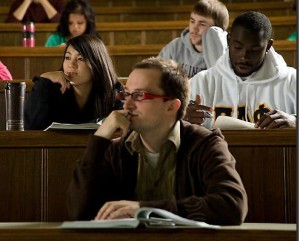
Yet innovation happens in higher education, too.
Our medium-sized square state on the West coast is a national leader, with 20 other states looking to copy our program (I-BEST – Integrated Basic Education and Skills Training) to make sure college students are ready to learn and succeed.
The traditional approach to making sure every student is ready for their college coursework is this: (1) send students who need more math or English skills to basic education classes, and once they’re done, (2) put them into the classes or training they need.
The traditional approach, however, was failing. Why? It took longer and students didn’t get college credit for the basic education classes.
By the year 2019, two thirds of all jobs in our state will require at least one year of college, according to the State Board for Community and Technical Colleges.
One out of six people in our state, however, lack the basic skills in math, reading and writing to get a living wage job. These aren’t all traditional college students. Of the 3,000 students in I-BEST programs, most are women (62 percent), many are people of color (41 percent) for whom English is a second language (21 percent). They’re also working moms and dads (47 percent).
I-BEST excels at helping those students succeed in college, get the training they need and get a good job. (This program got started via a bill from former Rep. Phyllis Kenney.)
Instead of splitting basic education into a separate step, I-BEST does both things at once. While one college instructor teaches the course material, another is in the same classroom to help students with the math or English skills they need.
This approach is much faster for the student — and much more effective, according to research by the Community College Research Center and separate studies by the Workforce Training and Education Coordinating Board.
Compared to college students enrolled in traditional basic education programs, I-BEST students are:
- 3 times more likely to earn college credits
- 9 times more likely to earn a workforce credential
- Employed at 35 hours per week vs. 15 hours the traditional basic education method
